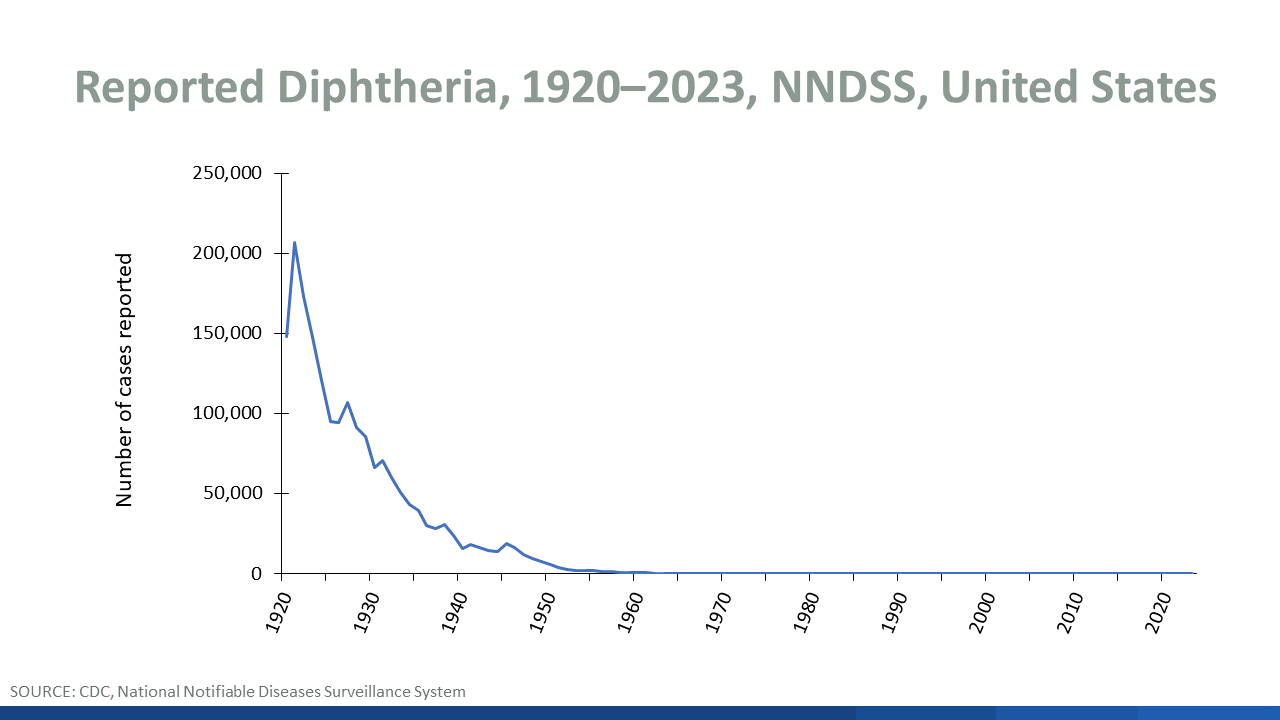Key points
- CDC tracks diphtheria cases using a national surveillance system.
- CDC also identifies cases by requests for diphtheria antitoxin (DAT).
- Diphtheria is now an uncommon disease in the United States.

Data systems
National Notifiable Diseases Surveillance System
Diphtheria is a nationally notifiable disease.
CDC collects national information about diphtheria cases through the National Notifiable Diseases Surveillance System (NNDSS). CDC receives NNDSS data each week.
Report suspected diphtheria cases promptly
Tracking DAT requests
CDC also identifies cases by DAT requests. Since 1997, DAT is available for U.S. healthcare providers only through CDC.
How the data are interpreted
Disease trends
Diphtheria used to be one of the most common causes of illness and death among children. In the United States, diphtheria antitoxin was introduced in the 1920s and 1930s. Universal childhood vaccination began in the 1940s.
Now diphtheria is well controlled. The last U.S. case of confirmed respiratory diphtheria was in 1997. A small number of cutaneous cases associated with international travel have been reported since then.

Data definitions
The Council of State and Territorial Epidemiologists (CSTE) released the most recent case definition for diphtheria in 2019.
